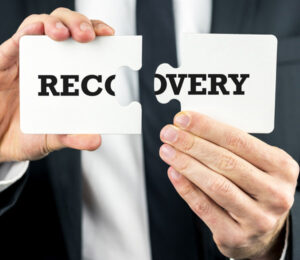Almost 200,000 American consumers have already filed for bankruptcy in 2018.
Bankruptcy is defined as a court proceeding in which a judge and court trustee examine the assets and liabilities of individuals and businesses who can’t pay their bills and decide whether to discharge (forgive) those debts or not.
It can be a scary subject, especially if you don’t have all the facts.
To help you separate fact from fiction, here are the 7 biggest bankruptcy myths, busted.
Myth #1 | People who file for bankruptcy lose everything.
While filing for bankruptcy is certainly a difficult decision, it doesn’t mean the end of the world.
Many people think filing for bankruptcy means giving up all your assets, like your house and car.
In reality, most Chapter 7 bankruptcy cases are no-asset cases, meaning the debtor doesn’t need to give up any possessions.
Chapter 13 bankruptcies are also no-asset cases, but their value will figure into your repayment plan.
Myth #2 | Bankruptcy forgives all debts.
Both Chapter 7 and 13 bankruptcies provide some debt relief, but there are a few exceptions.
Generally, you cannot discharge debts that you are deemed personally responsible for, like student loans and child support.
The types of debt you can usually discharge are personal loans, credit cards and medical bills.
Myth #3 | Filing for bankruptcy is always a bad decision.
The decision to file for bankruptcy is never easy, but that doesn’t mean it’s a bad idea.
In some instances, filing for bankruptcy may be the best option.
For example, if your income to debt ratio is 1:2 or higher, filing for bankruptcy might be your best bet to living debt-free.
Myth #4 | Bankruptcy ruins your financial future.
While bankruptcy will not ruin your financial future, there are some setbacks.
Those who file for bankruptcy have a harder time getting credit and are subject to high interest rates until the bankruptcy is removed from your credit report 7 to 10 years later.
Myth #5 | You can only file for bankruptcy once.
Congress made several changes to the bankruptcy laws in 2005, making it harder for some people to file for Chapter 7 bankruptcy and forcing high-income filers to repay at least some of their debt in a Chapter 13 bankruptcy.
However, depending on the timeline and type of bankruptcy, it is possible to file more than once.
You can receive a discharge once every 8 years in Chapter 7 and once every 2 years for Chapter 13.
But, if you get discharged through Chapter 7, you must wait 6 years before receiving a discharge through Chapter 13.
Likewise, if you get discharged through Chapter 13, you must wait 4 years before receiving a discharge through Chapter 7.
Myth #6 | You cannot file individually if you are married.
The bankruptcy laws allow anyone to file for individual or joint bankruptcy.
If you are married, it’s up to you and your spouse to decide whether to file jointly or not.
Myth #7 | Bankruptcy will ruin your credit score.
While your credit score will be affected when you file for bankruptcy, it won’t be destroyed forever.
In some situations, filing for bankruptcy could even increase your credit score.
A report from the Federal Reserve Bank of Philadelphia found that people who filed for Chapter 7 bankruptcy in 2010 had an average credit score of 538.2, which later jumped to 620 after the bankruptcies were finalized.
Filing for bankruptcy simply erases the negative consequences of unpaid debts, like interest and various fees.
And, after 10 years the bankruptcy will be erased from your credit score and you’ll get to start over with a clean slate.
[ Related: The 8 Biggest Debt Collection Myths Busted ]
Suggestions? Take this short survey.





